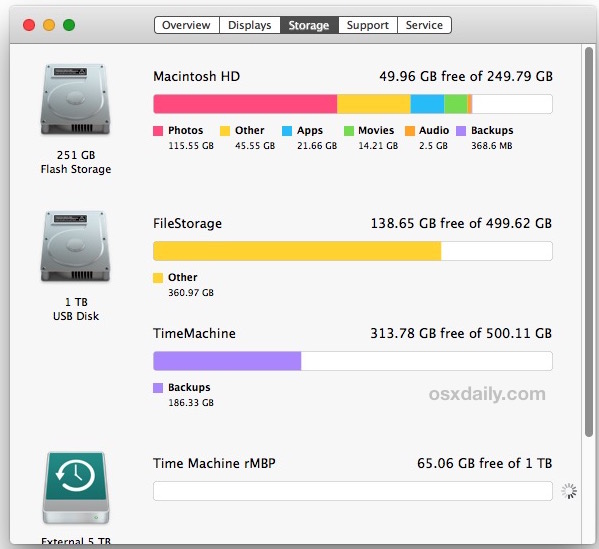- How To Expand Laptop Storage
- How To See Storage On Macbook Pro
- How To Get Storage On Computer
- How To See Storage On Macbook Pro
- DaisyDisk visualizes and lists storage by folder, and lets you drag to delete folders. GrandPerspective (free download or $1.99 to support development via the App Store) visualizes storage in the.
- NAS storage is that it is much slower than a hard drive. Think of it as being more like a filing cabinet or bookcase. It's primary role is STORAGE and sharing with other computer. With the purchase of my new Mac Mini I've decided it's a good time to transfer the bulk of my data over to a network attached storage device.

It just takes 3 clicks to find out how much disk space your Mac has, and how much of it is full. Based on MacOS 10.14.3, Mojave, these instructions also apply to most older MacOS versions.
How To Expand Laptop Storage
Activity Monitor User Guide
How To See Storage On Macbook Pro
You can see the amount of system memory being used on your Mac.
How To Get Storage On Computer
In the Activity Monitor app on your Mac, click Memory (or use the Touch Bar) to see the following in the bottom of the window:
Memory Pressure: Graphically represents how efficiently your memory is serving your processing needs.
Memory pressure is determined by the amount of free memory, swap rate, wired memory, and file cached memory.
Physical Memory: The amount of RAM installed.
Memory Used: The amount of RAM being used. Mac mojave 10 14 6 download. To the right, you can see where the memory is allocated.
App Memory: The amount of memory being used by apps.
Wired Memory: Memory required by the system to operate. This memory can't be cached and must stay in RAM, so it's not available to other apps.
Compressed: The amount of memory that has been compressed to make more RAM available.
When your computer approaches its maximum memory capacity, inactive apps in memory are compressed, making more memory available to active apps. Select the Compressed Memory column, then look in the VM Compressed column for each app to see the amount of memory being compressed for that app.
Cached Files: The size of files cached by the system into unused memory to improve performance.
Until this memory is overwritten, it remains cached, so it can help improve performance when you reopen the app.
Swap Used: The amount of space being used on your startup disk to swap unused files to and from RAM.
To display more columns, choose View > Columns, then choose the columns you want to show.
How To See Storage On Macbook Pro
You can use Activity Monitor to determine if your Mac could use more RAM.
